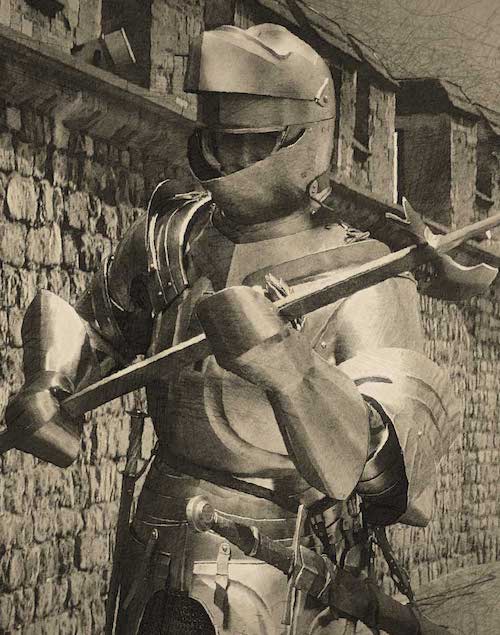Questions & AnswersFeatured questions submitted to Knightly Armes

A: Many of the armours made in bulk to be sold “off the rack” would have been left unpolished in order to reduce the cost. One has to remember that these armours were created in an age before the high-powered electric buffer wheels. Today, almost everything constructed of metal is highly polished. During the Middle Ages, it was much less common. It required significant time and energy to grind and polish a satin sheen on hammered steel. According to Tobias Capwell, curator of arms and armour at the Wallace Collection in London, that additional work could account to as much as 80% of the cost of a suit of armour.

A: I wanted to be as historically accurate as possible without having to pawn all of the wife’s heirlooms. I also hoped to find a complete harness rather than a composite one that had been assembled from multiple decades. That greatly reduced the number of options available. In the end I chose the harness once owned by Friedrich I, Kurfürst von der Pfalz, often referred to as Frederick the Victorious. Born in 1425 at Heidelberg, he was the son of Louis III, Elector Palatine.
Knyghtly Armes answers the question...
Do you have a question you want answered?
Q: How much did armour cost?
Q: Was armour only worn by the knightly class?
Q: Did a knight's armour really shine?
Q: Where did a knight buy his armour?
Featured Videos
Occasionally, we flip the camera switch over to video in order to catch some of the action. Check out a selection of featured videos taken from our Knyghtly Armes channel on YouTube.

